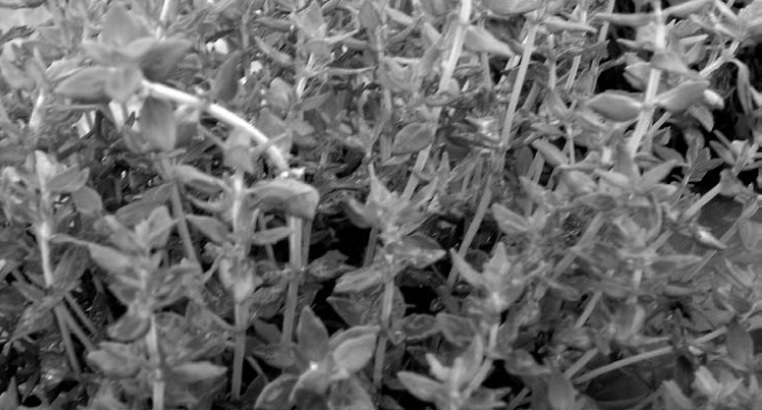Cultivo asociado de plantas aromáticas con café (Coffea arabica L.) bajo condiciones de invernadero y campo

Resumen
Most of the natural products that cause allelopathy are compounds of secondary metabolism synthesized by plants and microorganisms, and most of those currently identified are present in aromatic plants. The allelopathic and auto-toxic effects of coffee plants are well known due to the production and accumulation of caffeine in a soluble form in soil. Intercropping aromatic plants with coffee provides some advantages such as weed control, the recycling of nutrients, low external-input farming, and extra income for the idle area, but allelopathic interactions must be identified. The results obtained in this study did not show that either the age of crops, or the accumulation of caffeine in the soil, had a negative influence on the yield of aromatic plants. Potential detoxification of caffeine through sage, thyme, and rosemary may diminish toxic accumulation of the allelochemicals in old coffee plantations and therefore increase production. Results demonstrated the high potential of intercropping coffee with spearmint, basil, and oregano to increase yield production as it reduces idle area, and increases profit margins for small coffee producers.
Palabras clave
Cafeína, Cultivos asociados, Desintoxicación de suelos, Albahaca, Menta, Orégano, Salvia, Tomillo, Romero
Citas
- Anaya, A.L., G.R. Waller, P. Okinda Owuor, J. Friedman, C.H. Chou, T. Suzuki, F. Arroyo-Estrada and R. Cruz-Ortega. 2002. Overview of caffeine autotoxicity in coffee and tea plantations. pp. 71-91. In: Reigosa, M. and N. Pedrol (eds.) Allelopathy from molecules to ecosystems. Science Publishers, Enfield, USA.
- Cárdenas, J. 2003. Crisis cafetalera y perspectivas para los países productoras. In: XX Simposio Latinoamericano de Caficultura, San Pedro Sula, Honduras, 28-29 of may, 2003 (CD-ROM).
- Chou, C. H. 1986. The role of allelopathy in subtropical agro ecosystems of Taiwan. In: Putnam, A.R. and C.S. Tang (eds.). The science of allelopathy. John Wiley and Sons, New York.
- Chou, C.H. and G.R. Waller. 1980. Possible allelopathic constituent of Coffea arabica. L. J. Chem. Ecol. 6, 643-645.
- Einhellig, F.A. and G.R. Leather. 1988. Potentials for exploiting allelopathy to enhance crop production. J. Chem. Ecol. 14, 1829-1842.
- Friedman, J. and G.R. Waller. 1983. Caffeine hazards and their prevention in germinating seeds of coffee (Coffea arabica L.). J. Chem. Ecol. 9, 1099-1106.
- Friedman, J. and G.R. Waller. 1983a. Seeds as allelopathic agents. J. Chem. Ecol. 9, 1107-1115.
- Phippen, W.B. and J.E. Simon. 1998. Anthocyanins in basil (Ocimum basilicum L.). J. Agr. Food Chem., 1734-1738.
- Phippen, W.B. and J.E. Simon. 2000. Anthocyanin inheritance and instability in purple basil (Ocimum basilicum L.). J. Hered. 91, 289-296.
- Pohlan, J. 2002. México y la cafeticultura chiapaneca - reflexiones y alternativas para los cafeticultores. Verlag Shaker, Aachen, Germany. 386 p.
- Pohlan, J. 2001. Ökologischer Obstanbau - eine Alternative zum Kokaanbau im Departamento Cauca, Kolumbien. J. Agr. Trop. Subtropics 102 (2), 169-183.
- Rice, E. L. 1984. Allelopathy, 2nd ed. Academic, Orlando, FL, 422 p.
- Rizvi, S. J. H. and V. Rizvi. 1987. Improving crop productivity in India: Role of allelochemicals. In: Waller G. R. (ed). Allelochemicals: Role in agriculture and forestry. ACS Symposium series 330. Washington D.C.
- Suzuki, T. and G.R. Waller. 1987. Allelopathic due to purine alkaloids in tea seeds during germination. Plant Soil 98, 131-136.
- Waller, G.R., D.C. MacVean and T. Suzuki. 1983. Plant Cell Rep. 2, 109-112.
- Waller, G.R., J. Friedman, C.H. Chou, T. Suzuki and N. Friedman. 1986. In: Proceedings of the Seminar on Allelochemicals and Pheromones. Monograph 5. Institute of Botany, Academia Sinica, Taipei, ROC. pp. 239-260.